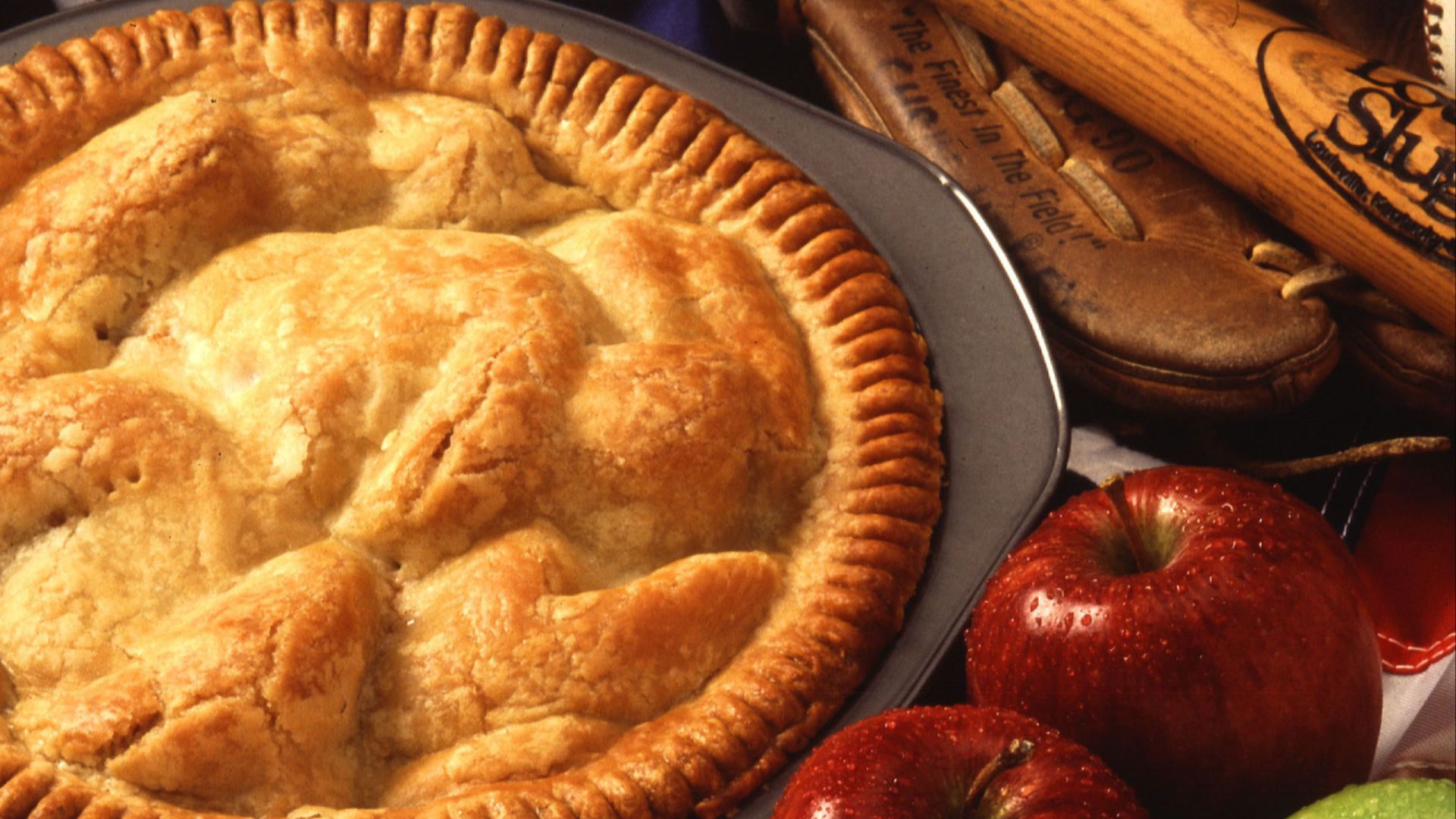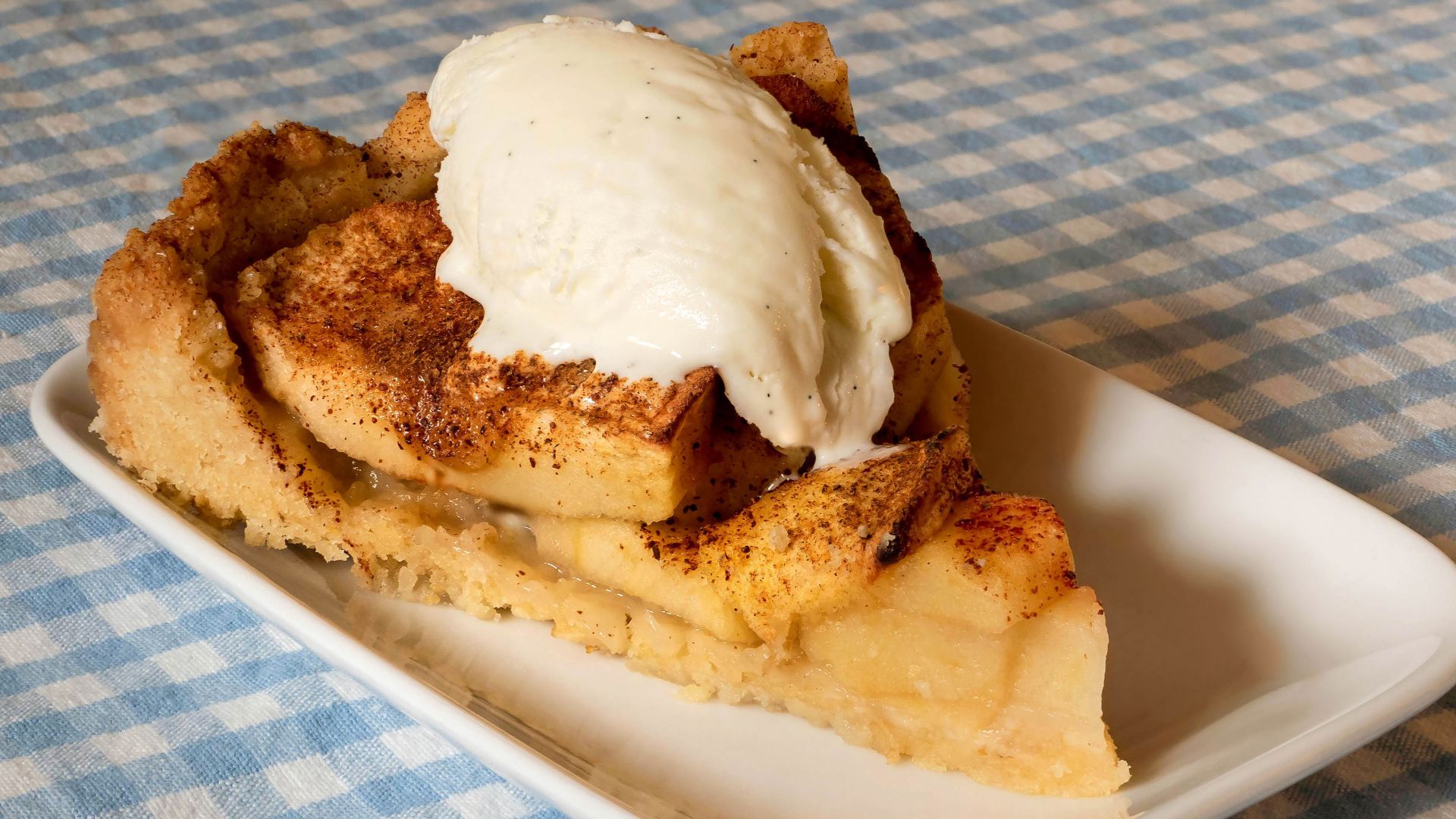 Motherhood_and_apple_pie.jpg: Scott Bauer
derivative work: Gesalbte on Wikimedia
Motherhood_and_apple_pie.jpg: Scott Bauer
derivative work: Gesalbte on Wikimedia
Currently, most of the nation is chowing down on leftover pumpkin pie—or pecan pie, depending on where you live—but there is one pie that reigns supreme across America: apple pie. Few things are more archetypically American than a slice of apple pie...except possibly bald eagle and the stars and stripes. In World War II, soldiers even said they were fighting "for Mom and apple pie".
Have you ever wondered how apple pie became America's favorite dessert? After all, Americans certainly didn't invent the dish, and the only apples native to North America are sour crabapples. Let's explore the history of this iconic dessert.
Early Pies
As we said, the only apples that naturally grew in America were crabapples. So, early colonists brought seedlings with them. Over time these apples developed into hundreds of varieties we know today like Honeycrisp and Granny Smith.
However, early colonists weren't using apples for pies, nor were they chowing down on them as an afternoon snack. Most of these apples were turned into ciders. The pies the early colonists enjoyed were far more substantial than the ones we enjoy today.
Colonial-era pies or "pasties" were sturdy and savory, filled with meat and veggies. Rather than being cut into with a fork, pasties were handheld meals. Pasties are still found throughout the British Isles, particularly in Cornwall.
This isn't to say that sweet pies were entirely foreign to the English. A 14th-century cookbook includes a delicious-sounding recipe for a spiced apple, fig, raisin, and pear pie! However, they can't take all the credit for the buttery, flaky crust we know today.
The English weren't the only colonists who brought their pie-making skills with them across the ocean. Dutch settlers claimed the area around the mouth of the Hudson River for the Netherlands. When New Amsterdam became New York, Dutch traditions were mixed with English ones to create a larger American identity.
There are two major camps of Dutch apple pie: streusel-top and lattice-top. Also called crumb-top, streusel-top is similar to what we think of as a crumble, topped with a crispy layer of flour, butter, and sugar. Lattice-top weaves together delicate layers of pastry to allow the fruit inside to caramelize
While this explains how American apple pie came to be, it doesn't explain why. For that, we have to jump forward almost 200 years for the publication of America's first cookbook.
American Cookery
American Cookery was written by Amelia Simmons in 1796. It was the first entirely American cookbook, as previous recipe collections were British. Simmons, likely a domestic laborer, collected and adapted recipes that were simple yet sumptuous.
Not only did American Cookery adapt fanciful British recipes for American convenience, but it prioritized American products. Simmons substituted American cornmeal for English oats, included indigenous recipes for Johnnycake and cranberry sauce, and prioritized New World ingredients like potatoes, chocolate, and tomatoes. And, yes, Simmons included multiple recipes for apple pie in her book.
American Cookery marked the formal birth of American cooking, combining the best of both sides of the Atlantic. Its publication not long after the War of Independence was not coincidental. The message Simmons sent was "This is who we are, and this is how we eat."
From there, the American love of apple pie only grew. From John "Johnny Appleseed" Chapman introducing apple trees across the country to Union soldiers chowing down on apple pie during the Siege of Petersburg, apple pie was here to stay. During the Cold War, apple pie, along with baseball, was used as a symbol of American culture that the Soviets could never take away.
Today, Americans consume more than 50 million apple pies annually, with the average person chowing down on six slices a year. Pumpkin and cherry come second and third on the pie podium. So, whether you like your apple pie crumbly or flaky, with ice cream or not, remember to thank Amelia Simmons for cementing its' status as an American icon!
KEEP ON READING

What's So American About Apple Pie?

20 Forgotten Sandwiches That Need A Comeback

The One Spice You Should Be Using Every Day






